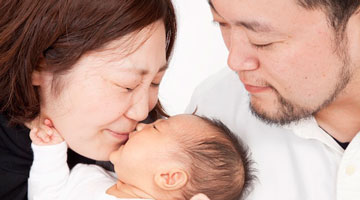Transcription:
Attachment theory is becoming more and more talked about in today's world which is fantastic. It's understandable that parents these days are so overloaded with information that they feel almost confused about what attachment is and what does it look like? How do you go it? And what I see most is a move toward more of a doing. If I do this, if I do that, then I will be creating this secure attachment and what I try to teach moms and dad is what I call the being of attachment. Attachment really is about how we respond to our babies and how the way we respond to them creates internal mental models for them of how the world is. So they start to have a representation of the world as being a safe place. So you can think about it as four S's. If you make your baby feel seen, feel soothed, feel safe, then you will have a baby who feels secure. When babies feel secure, they start to feel safe not only with other people but with themselves and they also start to feel safe over time going out and exploring the world. They also start to be able to master skills and learn new information. So when babies feel secure, over time they start to maternalize this feeling and what this leads to is trust. Trust in their parents, trust in other people, trusting themselves and trust in the world. I use a little story to describe the difference between the doing and the being. So I say imagine a mom who is doing all the things on her checklist. She breastfeeds her baby. She wears her baby. She sleeps with her baby but when you see her with her baby, you don't feel any connection, you feel that she for whatever reason is just not really attuned to her baby. She's checked out or she's somewhere else. Now imagine a mom who for perhaps for medical reasons is unable to breastfeed. Maybe she adopted her baby. Maybe she doesn't wear her baby because she has a bad back. Maybe she doesn't sleep with her baby because she doesn't feel comfortable having her baby in her bed, but this mother has a magical connection with her baby. You feel it. You feel it the minute you see them together. You see this mother respond to her baby. You see her catch that smile. You see her pause when her baby turns away. You see her exquisitely attuned to her baby. I describe it as like a feeling of falling in love with someone. When somebody loves you, you feel seen and you feel known by them. You feel like they have your back and they know you better than anybody else. This is really what the being of attachment is all about. It's about giving your baby that feeling that you know them and they're safe with you. It also includes knowing when they don't want to interact, when they've had enough, or when they're happy on their own. That's the level of attunement that the being of attachment looks like.




 GET ACCESS TO ALL PREMIUM CONTENT WITH NO ADS FOR $4.99/MONTH
GET ACCESS TO ALL PREMIUM CONTENT WITH NO ADS FOR $4.99/MONTH




Login or Register to view and post comments